Choosing the right observability tool can often feel as complicated as integrating observability in the first place. With so many platforms offering overlapping features, and all promising ‘real-time monitoring’, ‘AI-powered insights’, and ‘seamless integrations’. How do you know which one fits your needs best?
In this article, we break down the strengths and standout features of today’s most popular observability solutions. This comparison is based on a section from our ebook “The role of observability in modern businesses”, which explores everything from core observability pillars to real-world implementation tips.
Quick Comparison Table
| Tool | Focus Area | Ideal For | AI/ML Features | Integrations & Extras | Notable Strengths |
|---|---|---|---|---|---|
| AppDynamics | APM & Infra | Enterprises | Limited AI | Log Observer, Network Explorer, Browser/API monitoring | Deep application insights & profiling |
| Datadog | Full-stack | Cloud-native teams | Yes | 800+ integrations, Security, APM | Highly integrative, flexible, unified view |
| Dynatrace | Enterprise-grade | Complex cloud-native environments | Yes (Davis AI) | Automated root-cause analysis | Smart troubleshooting & automation |
| Grafana | Visualization stack | Open-source & hybrid setups | Yes (in cloud version) | Loki, Tempo, Mimir, OnCall, k6 | Modular OSS + powerful cloud observability |
| Kentik | Network monitoring | Infrastructure & NetOps teams | No | WAN/SD-WAN, Kubernetes, DDoS detection | Specialized in network observability |
| Selector AI | Troubleshooting | Teams wanting fast insights | Yes | Slack, natural language interface | ML correlation & fast issue resolution |
| New Relic | Full-stack | Dev-centric orgs | Yes | APM 360, real user monitoring | Unified telemetry & simplified optimization |
| Splunk | Observability + SIEM | Security-focused enterprises | Yes | SOAR, 1,000+ integrations | Blends observability with security analytics |
Tool-by-Tool Breakdown
AppDynamics
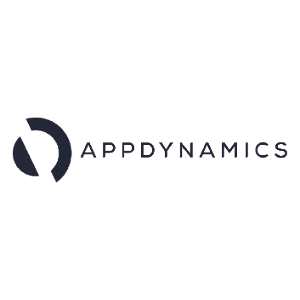
A useful APM platform that also covers infrastructure and user experience. Great for enterprises looking for detailed performance insights across their tech stack.
Strengths:
- APM with "Always On" profiling
- Real user & synthetic monitoring
- Network visibility and log integration
AppDynamics by Cisco positions itself as more than a traditional APM tool, it is a business-aligned observability platform. It’s useful for correlating application performance with business impact, making it a good fit for business teams who need to align IT with critical services.
Unlike platforms that prioritize developers, AppDynamics is made for non-tech stakeholders who care about service-level objectives (SLOs) and user experience. Features like Log Observer Connect, Always-On Profiling, and Business Transaction Monitoring offer both technical depth and strategic clarity. AI/ML exists, but is used mainly for anomaly detection.
We find it great at service level management, you can track error budgets, burn rates, and performance against SLOs with a clear view of how issues affect end users. Integration with OpenTelemetry makes it more flexible than it used to be, though customization still requires effort.
Datadog
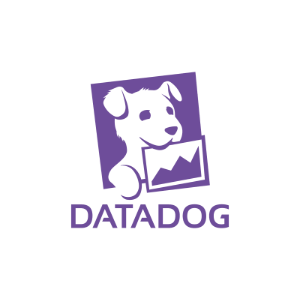
This Swiss Army knife of observability is flexible, integrative, and cloud-native.
Strengths:
- 800+ built-in integrations
- Unified platform for logs, metrics, APM, and security
- Simple support for microservices and modern stacks
If flexibility, scalability, and integrations are your top priorities, Datadog is hard to beat. It supports over 800 ready-made integrations and delivers full-stack observability through logs, metrics, traces, and, more recently, even support for monitoring large language models (LLMs).
Datadog’s observability pipelines are a standout feature: you can preprocess logs and metrics before routing them, which is necessary for keeping costs down in high-volume environments. Its dashboards are clean and intuitive, and the service map feature provides deep context during incidents.
It also brings AI into the fold in a more proactive way. Datadog uses machine learning to detect anomalies across telemetry data and automatically groups correlated alerts to reduce noise. For teams running cloud-native architectures at scale, Datadog's depth and modularity make it a top contender.
Dynatrace
https://docs.dynatrace.com/docs
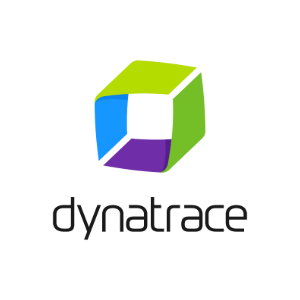
Known for its AI-powered root cause analysis, Dynatrace is made for enterprises managing large, complex systems.
Strengths:
- Full-stack observability with automation
- AI engine (Davis) for smart troubleshooting
- Ideal for dynamic, container-based architectures
Dynatrace differentiates itself with a strong AI-first philosophy. Its Davis AI engine highlights anomalies and explains them by providing root cause analysis across full-stack telemetry data. That precision is why large enterprises with complex environments gravitate toward it.
It also auto-discovers infrastructure, apps, containers, services. This reduces manual setup and ongoing configuration overhead. For developers, Dynatrace offers real-time insights with performance analytics built in.
What sets Dynatrace apart further is its focus on emerging workloads: it supports LLM observability and real-time insights into embedded AI model performance. If your organization is leaning into AI infrastructure or wants high observability coverage without manual instrumentation, Dynatrace is a great fit.
Grafana
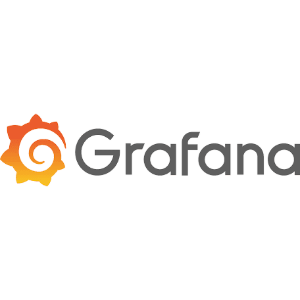
An open-source powerhouse for visualization, with a modular observability stack.
Strengths:
- Loki for logs, Tempo for traces, Mimir for metrics
- Synthetic monitoring and on-call management via Grafana Cloud
- AI/ML features in the managed version
Grafana started as a visualization tool but has grown into a full-stack observability platform, especially through its cloud offering. The OSS version remains a developer favorite, thanks to its flexibility, plugin ecosystem, and modular observability stack: Loki (logs), Tempo (traces), Mimir (metrics), and OnCall (incident response).
While it lacks the extensive plug-and-play capabilities of Datadog, Grafana wins on extensibility. It integrates easily with Prometheus, InfluxDB, Elasticsearch, and more. With the addition of AI observability modules and synthetic testing via Grafana k6, it has become a serious contender for teams that want control without bloat.
If your team values open standards, customization, and data source flexibility, and you have the engineering know-how to stitch it all together, Grafana is a solid choice.
Kentik
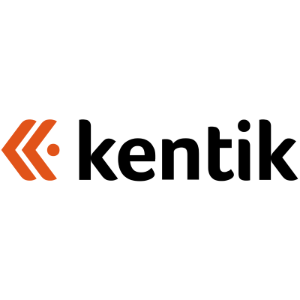
If network observability is your priority, Kentik delivers targeted capabilities.
Strengths:
- WAN/SD-WAN monitoring and Kubernetes insights
- DDoS detection and synthetic testing
- Real-time dashboards for traffic and cost control
While most observability platforms treat the network as just another layer, Kentik starts there. It’s built for network observability, offering real-time insights into WAN/SD-WAN, multi-cloud, and container network traffic.
Kentik uses enriched telemetry and eBPF-powered Kubernetes visibility to track traffic, detect anomalies, and help NetOps teams make better decisions. It also integrates with security tools and CDNs, making it a good fit for edge-heavy or hybrid infrastructure teams.
Its focus on infrastructure context (applications, users, and policy mapping) means you get a more meaningful view of what’s happening, not just traffic volume, but why that traffic matters. If network health is business-critical for you, Kentik deserves a look.
Selector AI
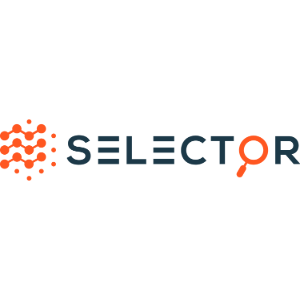
Built for fast, intuitive troubleshooting through machine learning and natural language.
Strengths:
- Natural language queries for quick insights
- Data normalization and correlation across layers
- Integrates with chat tools like Slack for faster responses
Selector AI stands out for its simplicity and its unified monitoring approach. It combines observability with AIOps to help teams extract insights fast, using natural language processing (NLP) and correlation engines.
It’s ideal for NetOps, DevOps, or SRE teams who want intuitive troubleshooting without having to be query language experts. Selector collects telemetry from the full stack and makes it accessible via tools like Slack or custom dashboards.
One of its strongest features is configuration observability: it tells you what’s wrong, and it helps you understand how config drift or dependency changes might be contributing. This platform is great for lean teams who want big capabilities without big complexity.
New Relic
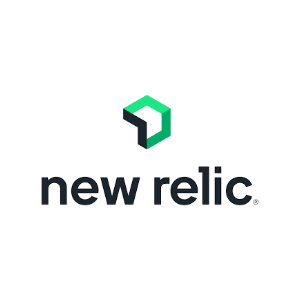
A unified performance monitoring platform built with developers in mind.
Strengths:
- APM 360, real user monitoring
- Unified telemetry with alerting and dashboards
- AI-powered insights for performance optimization
New Relic aims to simplify observability without compromising power. Its pricing model (pay by usage) and all-in-one platform make it attractive to smaller orgs or dev-first teams.
It offers full-stack visibility, from real user monitoring (RUM) and synthetic checks to APM and infrastructure monitoring. A standout feature is APM 360, which brings a panoramic view of application performance that’s easy to navigate and connect with deployment changes or anomalies.
New Relic also brings AI into play, surfacing patterns and proactively detecting anomalies. While it may not go as deep as Dynatrace or offer Grafana in terms of customization, its clarity, usability, and affordability make it a great all-rounder.
Splunk
https://docs.splunk.com/Documentation
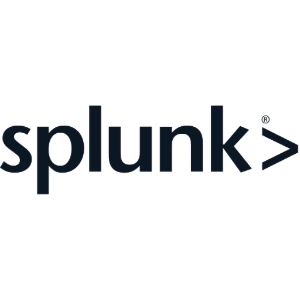
A veteran in the data analytics space that combines observability with security.
Strengths:
- Tools for security operations (SOAR, SIEM)
- AI insights and anomaly detection
- 1,000+ integrations for diverse data environments
Splunk is the only tool in this comparison that blurs the line between observability and SIEM. That makes it ideal for security-conscious enterprises that want to unify operations and threat visibility under one platform.
With 1,000+ integrations, powerful search capabilities, and tools like SOAR and Stream Processor, Splunk helps detect, investigate, and respond in real time. Observability Cloud adds APM, RUM, and infrastructure monitoring to its stack, making it a full-spectrum platform.
The trade-off? Complexity and cost. But if your team is already familiar with Splunk or you want to combine IT and security telemetry, this platform can be a major asset.
How to Choose the Right Observability Tool
When choosing an observability solution, start by aligning your choice with your organization’s goals and architecture. We suggest establishing clear objectives, such as minimizing downtime or improving system performance, and identifying the data types—logs, metrics, traces—that are most relevant to your use case (more about that in the ebook).
If you're running a cloud-native stack with complex microservices, tools like Dynatrace or Datadog offer many integrations and automated insights. For teams looking for open-source flexibility, Grafana's modular architecture may be a better fit. And if your focus is network performance or security observability, Kentik or Splunk may be closer to your needs. Scalability, ease of integration, and support for real-time data collection are also key criteria worth evaluating.
Each observability tool has its unique strengths, and the best choice really depends on your team’s size, goals, and existing infrastructure. Whether you need deep application insights, network-level visibility, or AI-powered troubleshooting, there's a platform out there that can provide what your business needs.
Want a deeper look into observability pillars, challenges, and real-world use cases?







